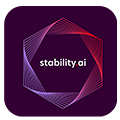Experience in Blockchain
Employees
Projects
Blockchain Experts
With the emergence of revolutionary AI-based generative platforms like chatGPT and Gemini, the vision of AI expansion has expanded to a larger audience, especially for businesses interested in enhancing their operational efficiency with the inclusion of emerging technologies. This enables them to create innovative content using data and advanced neural networks.
This comprehensive guide delves into the dynamic aspects of generative AI architecture and the emerging opportunities for businesses in crafting applications based on this model.
Table of Contents
Generative AI: What Does It Bring New to the Evolving Digital Space?
What are the Core Components Driving the Generative AI Architecture?
The Disruptive Layers of Generative AI Architecture
Application Layer
Data Platform and API Management Layer
LLMops and Prompt Engineering Layer
Model Layer and Hub
Infrastructure Layer
Challenges Involved in Proceeding with the Implementation of
Enterprise-Generative AI ArchitectureData Quality and Quantity
Model Selection and Optimization
Computing Resources
Maintenance and Monitoring
What are the Generative AI Models?
Generative Adversarial Networks (GANs)
Variational Autoencoders (VAEs)
Transformers and Language Models
Enterprise-grade Generative AI: Why Is It Attention-grabbing?
What are the Key Considerations for Developing an Enterprise Generative AI?
Practices You Should Follow While Implementing Enterprise-grade Generative AI Architecture
1. Choose a Clear Use Case
2. Establish Data Privacy Guidelines
3. Test and Learn
4. Prepare Your Organization
5. Create a Center of Excellence
What Can We Expect in the Future for Enterprise Generative AI?
What are the Emerging Future-focused Trends in Generative AI Architecture?
Integrating Generative AI with Enterprise Applications: The Ultimate Use Cases
How Can You Integrate Generative AI Tools with Established Enterprise Systems?
What are the Advanced GenAI Tools and Frameworks Contribute Largely in 2024?
Wrapping Up
FAQ
Generative AI: What Does It Bring New to the Evolving Digital Space?
- Generative AI Architecture is an advanced AI subset that autonomously uses advanced machine learning and deep learning techniques to create new, original content.
- These models, built on complex patterns derived from large datasets, follow strict system rules to produce engaging writing, stunning visuals, and innovative formats.
- Generative AI holds significant potential for versatile applications across various fields by learning and mimicking patterns from their training data.
- This involves various models including Generative Adversarial Networks (GANs) consisting of two neural networks: a generator that creates synthetic data and a discriminator that distinguishes between real and fake data.
- The architecture also comprises (VAEs) and transformers to produce realistic data and effectively interact with users through applications like AI companion chatbots.
What are the Core Components Driving the Generative AI Architecture?
Generative AI architecture can be constructed of various key components which can be useful for deriving an optimal performance. They include the following:
Data Preprocessing
- Data preprocessing is essential for ensuring the accuracy and effectiveness of generative models.
- It involves transforming raw data into a clean and normalized format, which is crucial for robust model performance.
- High-quality, diverse data enhances model outcomes, while techniques like filtering, transformation, and normalization prepare data for training.
Model Selection
- Choosing the suitable model is critical for optimal performance in specific applications. Familiarity with GANs, VAE models, and transformers is crucial.
- Understanding their strengths and weaknesses helps select the most suitable one for executing different tasks.
Optimization and Feedback Loop
- Optimization and feedback components focus on enhancing the model's performance by integrating feedback into the training process.
- Techniques such as adversarial training, fine-tuning, and regularization are used to improve accuracy and output quality continuously.
- Feedback from validation datasets, user inputs, or other models helps refine the generative process.
Deployment and Integration
- The deployment and integration phase ensures the generative model is effectively utilized in real-world scenarios.
- It involves setting up necessary infrastructure like servers and APIs for smooth access and interaction.
- It also involves adapting the model to meet specific application requirements and user needs.
The Disruptive Layers of Generative AI Architecture
Application Layer
- This layer enhances collaboration between machines and humans by making generative AI models more accessible and user-friendly.
- It includes end-to-end applications using proprietary models based on domain expertise or open-source frameworks for specific use cases.
Data Platform and API Management Layer
- High-quality data is crucial for effective implementation of AI generative apps.
- Preparing data involves significant time for ingestion, quality checks, cleaning, storage, and vectorization.
- Organizations manage both structured and unstructured data to align with their generative AI strategies.
LLMops and Prompt Engineering Layer
- LLMops involves tools and practices for adapting and deploying AI models in applications.
- This includes selecting and customizing models, deploying them, and monitoring performance.
- Fine-tuning prompt engineering involves data labeling, model training, and deployment to production.
Model Layer and Hub
- This layer includes foundational models for machine learning, large language models (LLMs), model hubs, and fine-tuned models.
- These serve as the backbone of generative AI, supporting tasks like content creation and training on both public and private datasets.
Infrastructure Layer
- This layer encompasses cloud platforms and specialized hardware for handling the computational demands of generative AI.
- It includes large datasets and GPU or TPU clusters.
- Most businesses use cloud infrastructure to manage the computational power and costs of running large AI models.
Challenges Involved in Proceeding with the Implementation of Enterprise-Generative AI Architecture
Data Quality and Quantity
- Implementing generative AI in enterprises depends on acquiring high-quality, diverse, and relevant data.
- It can be challenging to obtain sufficient data, especially in niche industries, and ensure it stays updated.
- Data collection, processing, and labeling require substantial effort and investment, impacting model accuracy and performance.
Model Selection and Optimization
- Choosing and fine-tuning a suitable generative AI model involves profound expertise and significant computational resources.
- With various models available, selecting the most suitable one demands understanding their strengths and weaknesses.
- It requires extensive testing and adjusting hyperparameters for optimal performance.
Computing Resources
- Generative AI models require substantial computing power for optimal performance. This can include high-end CPUs, GPUs, or TPUs.
- Smaller enterprises may find this a barrier due to budget constraints, as training and running these models demands significant resources and infrastructure.
Maintenance and Monitoring
- To ensure their accuracy and performance, a team must continually maintain and monitor generative AI models.
- This includes retraining models with new data, detecting errors in real time, and using specialized tools for continuous optimization, which requires a dedicated and skilled team.
What are the Generative AI Models?
Generative AI applications can built using the implementation of various effective models, including:
Generative Adversarial Networks (GANs)
- GANs basically consist of two networks.
- One is a generator that creates data, and another is a discriminator that evaluates it.
- The generator's output improves through adversarial training, though issues like mode collapse can occur.
- These models are mostly utilized for image synthesis and art creation.
Variational Autoencoders (VAEs)
- VAEs operate through key components, including an encoder, decoder, and latent space.
- They learn compressed data representations and generate new samples, balancing reconstruction accuracy with regularization.
- These are valuable for data compression, anomaly detection, and generating diverse outputs.
Transformers and Language Models
- Transformers utilize an encoder-decoder structure with self-attention mechanisms.
- These are known for efficient data processing and excel in natural language processing (NLP) tasks.
- This includes generating coherent text, translation, and contextual understanding.
Escalate Your Enterprise Efficacy with Our AI Generative App Development Solutions!
Enterprise-grade Generative AI: Why Is It Attention-grabbing?
-
Enterprise generative AI architecture utilizes advanced algorithms to generate content or data autonomously.
-
It combines machine learning models and neural networks trained on large datasets to understand patterns and relationships, enabling the creation of new content.
It can vastly enhance operations at an enterprise level, providing a competitive edge over businesses slow to embrace innovation.
-
Large enterprises often implement generative AI by using popular models like GPT-4, Claude, or Gemini and training them on specific in-house data to tailor their applications.
-
This architecture can enhance enterprise tasks like content creation, data analysis, and problem-solving, making processes more efficient.
It reduces manual work and empowers organizations to harness AI across various aspects of their operations.
What are the Key Considerations for Developing an Enterprise Generative AI?
-
Generative AI’s ability to generate human-like responses, create multiple image iterations, and write code positions it as a powerful business tool.
-
However, readiness for adopting generative AI requires skilled data analysts, engineers, and machine learning experts to ensure secure and reliable integration.
Successful implementation demands continuous feedback, extensive training data, and supervised learning.
-
Custom models aligned with your venture’s knowledge base, projects, and brand voice can be costly, often reaching millions of dollars.
Alternatively, outsourcing model training with a prominent company like us will be more effective.
Practices You Should Follow While Implementing Enterprise-grade Generative AI Architecture
Choose a Clear Use Case
Focus on a specific use case to avoid overwhelm when adopting generative AI.
For example, modernize enterprise search with AI tools like retrieval-augmented generation (RAG) to enhance information delivery and user experience.
Establish Data Privacy Guidelines
Develop strong data governance practices to prevent breaches and misuse.
Work with legal and IP experts to create a robust framework and ensure human oversight for tasks like data labeling and results validation.
Test and Learn
Experiment with generative AI using small test groups to gauge its effectiveness.
This approach helps familiarize employees with the technology, identify practical use cases, and understand its limitations, all while maintaining human oversight.
Prepare Your Organization
Engage the whole organization in AI integration.
Promote responsible AI use, provide training on ethical practices and AI technologies, and foster a culture of feedback and continuous learning.
Create a Center of Excellence
Establish a dedicated team to lead AI initiatives and optimize AI tools across the organization.
Ensure all employees are trained to effectively use AI in their roles, supporting widespread adoption and integration.
What Can We Expect in the Future for Enterprise Generative AI?
Generative AI is set to transform business operations at unprecedented speeds.
This technology will enable businesses to achieve new levels of efficiency, automation, and customer experiences by optimizing processes and generating insights faster than ever.
While public interest often focuses on entertaining applications, entrepreneurs should target specific, high-value use cases that drive economic benefit.
Effective implementation requires integrating AI into existing workflows and measuring success through clear metrics.
As generative AI becomes more accessible, its transformative potential for enterprises will become increasingly evident.
Harness the Power of Generative AI Architecture to Ignite Your Project With Our Experts!
What are the Emerging Future-focused Trends for Generative AI Architecture?
The demand for generative AI applications is growing and is poised to expand further as a concept with various trends. Some notable trends include the following:
Multimodal Generation
Generative AI is advancing in the digital realm to create outputs across multiple modalities. This simultaneously includes images, audio, video, and text, offering richer, more immersive user experiences.
Interactive and Adaptive
Generative AI architecture is expected to become more interactive and adaptive, allowing real-time user feedback to shape outputs, resulting in highly personalized and responsive content.
Domain-Specific Applications
Future generative AI models will be increasingly tailored to specific industries. It can produce realistic and specialized outputs, such as virtual fashion visuals or personalized medical images.
Hybrid Models and Crossdisciplinary Research
The next phase of generative AI will involve hybrid models that integrate techniques from various fields, enhancing versatility and problem-solving capabilities across diverse applications.
Integrating Generative AI with Enterprise Applications: The Ultimate Use Cases
The demand for generative AI applications is growing and is poised to expand further as a concept with various trends. Some notable trends include the following:
Incorporating Generative AI into Applications
Generative AI is widely adopted by enterprises, enhancing everything from code generation to product design and marketing.
Code Generation
Generative AI serves as a powerful digital assistant, enabling developers to generate accurate code efficiently with AI-driven tools like Copilot.
Product Design and Engineering
In product lifecycle management, generative AI enhances design and engineering by enabling teams to explore various materials, structures, and production options.
Enterprise Content Management
Generative AI streamlines content management, providing tools for efficient content creation, management, and recommendations and assisting human authors in drafting content.
Marketing and Customer Experience
Generative AI elevates marketing and customer experience through personalization and advanced analytics, driving greater customer satisfaction and loyalty.
What are the Advanced GenAI Tools and Frameworks Contribute Largely in 2024?
GenAI development frameworks offer a structured approach to building and managing AI applications. Some prominent frameworks include the following:
![]()
LangChain
![]()
Hugging Face
![]()
PyTorch Lightning
![]()
Amazon SageMaker
![]()
Google Cloud AI
![]()
Microsoft Azure ML
![]()
Stability AI
![]()
RunwayML
![]()
OpenAI’s GPT-4
![]()
Google’s Gemini
![]()
Meta’s Llama
![]()
Midjourney
![]()
Jasper.ai
![]()
Azure OpenAI
![]()
Google Cloud Vertex AI
![]()
IBM Watson Generative AI
![]()
Hugging face transformers
![]()
Adobe Firefly
How Can You Integrate Generative AI Tools with Established Enterprise Systems?
Incorporating generative AI tools in popular enterprise systems is a daunting but rewarding task at the same time. Some useful strategies for the integration include the following:
API Integration:
Utilize open APIs for seamless integration with existing systems or develop custom APIs if needed. Prioritize data privacy and security during API exchanges.
Data Pipeline Integration
Set up ETL processes to transfer data between AI tools and systems, ensuring data quality and governance to protect sensitive information.
User Interface Integration
Embed AI features in existing interfaces for a smooth user experience, leveraging AI-powered chatbots and customizable interfaces for tailored interactions.
Cloud-Based Integration
Use cloud-based AI services for easy integration, combining on-premises and cloud components for scalability and security.
Wrapping Up
In conclusion, generative AI architecture has impressed enthusiasts and entrepreneurs across various industries for its practical solution. As businesses seek more personalized and efficient solutions, generative AI applications can be targeted more from a larger audience. By implementing the best practices for creating a generative AI architecture and tailoring it to your specific enterprise requirements, you can thrive in the market with extended capabilities. It allows you to future-proof your venture in the evolving Web3 realm. Connect with our experts to strategically craft your Generative AI application with a robust architecture today!
FAQ
Generative AI architecture is a structured framework for creating generative AI models. It integrates data processing, model training, and output generation to achieve top results.
GANs work efficiently with two competing neural networks, including the generator, which produces synthetic data, and the discriminator, which distinguishes it from real data.
Variational autoencoders (VAEs) act as a generative AI model to create new data by learning a compressed representation of the original input and recreating similar types of data.
Generative AI-built architecture is widely used for various applications across sectors, including image and video creation, text generation, discovery, art, and data augmentation.
Neural networks are the foundational elements of generative AI architecture. These networks can be utilized to identify patterns in the available data and produce new content.
Generative AI models the data distribution to create new data, while discriminative AI focuses on distinguishing and categorizing existing data into specific classes for accuracy.
Some key challenges of generative AI applications include ensuring high-quality data, mitigating bias, maintaining control over the models, and also addressing ethical concerns.
These generative AI models efficiently manage and progress large datasets using efficient architectures, distributed computing power, and strategic data sampling techniques.
Yes, generative AI applications can be deployed in real-time scenarios with the help of optimized models and hardware acceleration techniques to ensure efficient performance.
Emerging generative AI trends in the current market include multimodal generation, AI-powered creativity, and the integration of this model into various everyday applications.














































